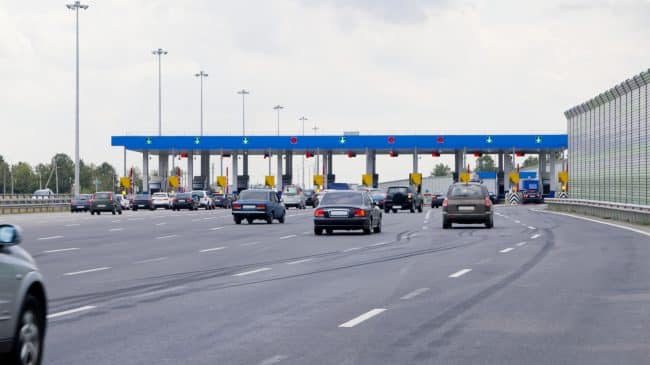Jerry Mohler recently trashed Maryland Gov. Larry Hogan’s congestion-relief plan in a Washington Post op-ed. His attack shows a fundamental misunderstanding of public-private partnerships, dynamic tolling, risk transfers, and even consumer decision-making.
While Mohler’s launch point contains a kernel of truth—public debt generally has a lower average cost than private capital, in a large part due to favorable tax treatment—merely expressing a preference for private capital does not “downplay” the cost disparity. A state preference for private capital in a mega-project should not be alarming: It merely signals that the public sector wishes to transfer, rather than retain, financial risks in the agreement.
The Indiana Toll Road provides a clear example of why a state would want to transfer financial risk to its private partner. Despite Mohler’s characterization of the private operator ’s bankruptcy as “leaving taxpayers to clean up the mess,” Indiana taxpayers were spared. As Reason Foundation’s Bob Poole noted at the time of the bankruptcy announcement and again last year, “There was no taxpayer bailout of any kind.” What did Indiana taxpayers get? $3.8 billion up front for new highway projects statewide, numerous capital improvements over the 75-year lease (including a new electronic tolling system and modernized service plazas), and a commitment from the operator to return the asset to the state in like-new condition at the end of the lease—a far cry from poor state the Toll Road was in when the lease was signed. The $137.3 million over-budget figure the author cites? It refers not to the Indiana Toll Road (I-90) but to a project to build a segment of brand-new I-69 between Bloomington and Martinsville, previously criticized for a poor selection process leading to an underqualified operator.
The misrepresentations don’t end with Indiana, though. The author’s claim that tolled managed lanes in Virginia “may not be worth paying for,” is meaningless. Some drivers choose to pay tolls to avoid congestion, others don’t; whether doing so is “worth it” rests on individual decision-making at certain points in time. For those who choose to pay, using the managed lane is “worth it” to them, just as not paying a toll and choosing an alternate route implies the opposite. What does the cited research show? Managed lanes are operating as expected: tolls are responding to demand, and users are saving time, when compared to alternate routes.
The populist bent of the article continues with Mohler’s referring to managed lanes as “Lexus (or, as a local politician quipped, “Lamborghini”) lanes.” The Post’s own survey findings, released last month, demonstrate otherwise:
“Despite HOT lanes’ disparaging nickname of “Lexus lanes,” most 495 and 95 express users are not affluent, according to the survey, and many of them work for employers who subsidize their commutes. About 60 percent of the frequent users said they have household incomes of less than $100,000, and a similar share have a bachelor’s degree or higher. About one-third of those users said they don’t mind the tolls because their employers pick up the bill, according to the survey.”
Far from being the luxury depicted by the author, the Post’s survey depicts managed lanes as an economical means of getting critical, but mostly not affluent, workers to their jobs and meetings on time (and to day-care to avoid late fees).
Having little of substance with which to “scare” the reader (Mohler’s term) over tolls that adjust to traffic demand (i.e. the way they’re supposed to adjust), Mohler turns to an even scarier strategy: depicting informed government decisions about risk management as helpless surrenders of power to greedy corporations. Stating “(p)ublic-private partnerships almost always take decision-making power from the public” sounds bad but can mean little. When a government decides it wants to transfer a risk to a competitively-selected private partner, it is, by definition, giving the private entity decision-making power that the government would otherwise retain for itself. The key lies in holding the private entity to contractual standards to ensure that the ceded powers get exercised in a manner consistent with what the government wants. The hundreds of pages in PPP agreements provide guidelines and standards ranging from grass height and dead animal removal to the ability to terminate the agreement for cause.
Though Gov. Hogan’s plan to add managed lanes to I-495 and I-270 in Maryland is still in its infancy, Mohler and like-minded critics are lining up to attack it. While claiming to have the public’s interests at heart, their attacks rest on numerous mischaracterizations that show a profound ignorance of how managed lane lease agreements and their numerous components work.
While Maryland residents are currently split on the plan, Virginians continue to support their managed lanes, with approval ratings typically exceeding 70%. The hesitance of Marylanders is expected: moving to a tolled managed lane system involves significant changes—and that naturally makes people nervous. But once motorists familiarize themselves with managed lanes, they learn to appreciate them and the service they provide: the availability of faster and more-reliable commutes when people really need them.
In his dismissal of Maryland’s congestion-relief plan as “poor,” it’s unclear what remedies Mohler has in mind to give Maryland drivers much-needed relief. And Mohler’s dismissal of Gov. Hogan’s plan to tap private capital as “bad” is based on mischaracterization and ignorance. Over the last 15 years, $36 billion has been invested in privately financed toll projects around the country. It’s time Maryland got serious about tapping the private sector for better highways.

